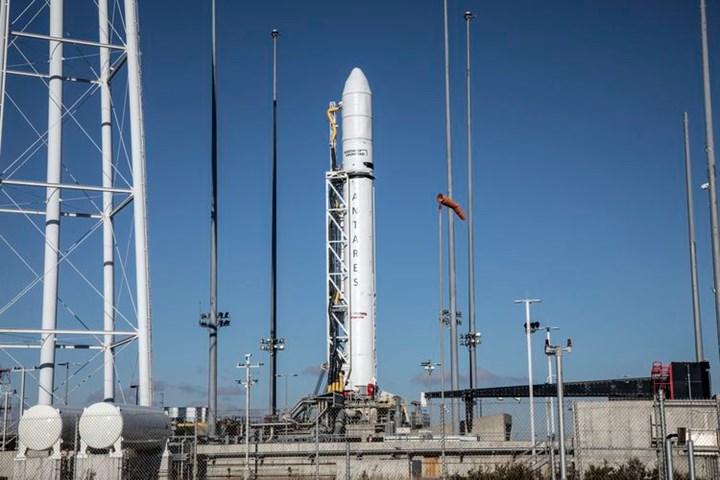Northrop Grumman, Firefly Aerospace to develop Antares upgrade, new medium launch vehicle
The Antares 330 rocket, leveraging Firefly’s composites technologies and Northrop’s avionics and software, will be developed alongside a medium launch vehicle to serve various space launch markets.

Antares rocket. Photo Credit: Northrop Grumman
(Chandler, Ariz., U.S.) and (Cedar Park, Texas, U.S.), known as a leading provider of composites-intensive launch and in-space vehicles, have joined forces to provide an American-built first-stage upgrade for the Antares rocket and a new medium launch vehicle to serve commercial, civil and national security space launch markets.
“Through our collaboration, we will first develop a fully domestic version of our Antares rocket, the Antares 330, for Cygnus space station commercial resupply services, followed by an entirely new medium-class launch vehicle,” Scott Lehr, vice president and general manager, launch and missile defense systems, Northrop Grumman, says. “Northrop Grumman and Firefly have been working on a combined strategy and technical development plan to meet current and future launch requirements.”
Firefly’s propulsion technology use the same propellants as the current Antares rocket, which minimizes launch site upgrades. The Antares 330 will incorporate seven of Firefly’s Miranda engines and leverage its composites technology for the first-stage structures and tanks, while Northrop Grumman provides its avionics and software, upper-stage structures and Castor 30XL motor, as well as proven vehicle integration and launch pad operations. This new stage will also significantly increase Antares’ mass to orbit capability, according to the partners.
“Firefly prides itself on being a disrupter in the new space industry and collaborating with a proven space pioneer like Northrop Grumman will help us continue that disruption,” Peter Schumacher, interim CEO, Firefly, adds.
The Antares 330 performance upgrade will enable Northrop Grumman to continue to support the company’s current contracts while planning for future mission capabilities.
Related Content
-
Combining multifunctional thermoplastic composites, additive manufacturing for next-gen airframe structures
The DOMMINIO project combines AFP with 3D printed gyroid cores, embedded SHM sensors and smart materials for induction-driven disassembly of parts at end of life.
-
Otto Aviation launches Phantom 3500 business jet with all-composite airframe from Leonardo
Promising 60% less fuel burn and 90% less emissions using SAF, the super-laminar flow design with windowless fuselage will be built using RTM in Florida facility with certification slated for 2030.
-
Low-cost, efficient CFRP anisogrid lattice structures
CIRA uses patented parallel winding, dry fiber, silicone tooling and resin infusion to cut labor for lightweight, heavily loaded space applications.






